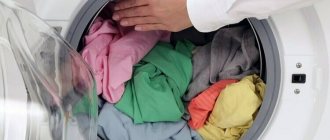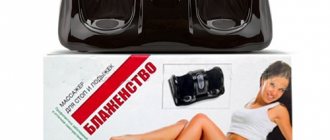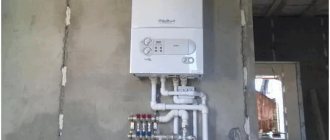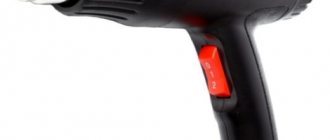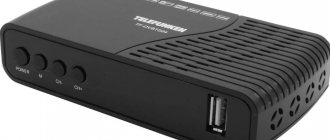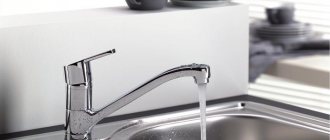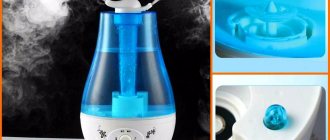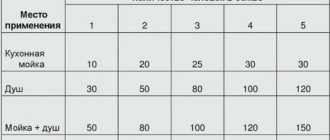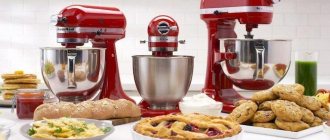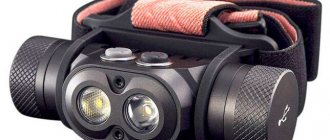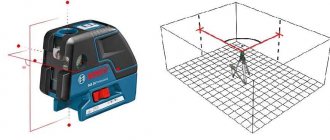When designing, purchasing, and installing heating systems and hot water supply systems, it is necessary to take into account a number of factors that influence the features and cost of operating heating devices and the efficiency of their use. Almost all people who have wondered about autonomous heating of their home/cottage are interested in the question: is it possible to have economical and, at the same time, comfortable heating using a solid fuel boiler?
Currently, many consumers prefer to use gas boilers, and solid fuel boilers are rarely used. But times change, and gas prices change with them. This is one of the most important reasons why you should know how to choose the right solid fuel boiler.
Choosing the optimal solid fuel boiler involves determining a number of parameters. Let's focus on the main ones.
Power of a long-burning solid fuel boiler
The first thing we pay attention to is the power of the boiler. Conventionally, ten square meters require 1 kW of power. But this is only conditional. The power calculation should be carried out by a heating engineer based on thermal calculations, tabular, reference, and regulatory documents, taking into account the structural and architectural features of the building, climatic conditions, heat losses - there are a very large number of factors. Therefore, it is better to entrust the choice of power to professionals. Our specialists will make all the necessary calculations free of charge and at a high professional level. All solid fuel boilers on the market are divided into two large groups based on power:
- for individual heating systems with a power of up to 100 kW;
- for general heating systems, industrial boilers with a power of over 100 kW.
One important point. It is advisable to take the boiler power with a reserve, preferably a little more, in order to use the equipment in low-intensity combustion mode, by adjusting the volume of primary air supply, this increases the efficiency of use of the equipment and simplifies operation. And yet, the power of the boiler directly depends on the calorie content of the fuel, this factor also needs to be taken into account.
Features and principle of operation of long-burning boilers
Unlike an ordinary stove, a solid fuel boiler makes maximum use of the thermal properties of organic fuel. During the combustion of wood, coal or peat, in addition to carbon dioxide and water vapor, hydrocarbons are released, which are pyrolysis gases that are not used when burning fuel in a conventional furnace. The amount of heat released during the combustion of these compounds is significantly higher than the heat transfer during simple combustion of wood.
The operating principle of solid fuel boilers is based on the use of pyrolysis gases as an energy carrier and minimizing the use of open fire. Thus, organic fuel, in fact, is not a direct source of heat, but serves as a raw material for the production of gaseous hydrocarbons, and open combustion is replaced by smoldering with minimal access of oxygen.
Types of fuel for a solid fuel boiler
The second parameter that you need to pay attention to is the type of fuel on which the boiler operates. Modern heating boilers can operate on different types of fuel and/or a combination of fuel types, the choice of which directly depends on the region, climatic and natural characteristics. In Siberia, the lowest cost type of fuel is firewood (wood waste) and coal, so solid fuel heating boilers are the most optimal solution. In addition to firewood and coal, this type of heating equipment can operate on solid waste from agriculture, forestry and pellets. Combination boilers are more difficult to operate and are more expensive, but are highly versatile. Choose solid fuel or types of fuel based on its availability on the market and price. In Siberia, the available species are:
- coal, stone Montenegrin, Balakhtinsky and Borodino brown, when purchasing coal you need to pay attention to its fraction and grade, they must coincide with the technical operating conditions of the boiler;
- firewood, birch, pine, from other types of wood, you can buy chopped immediately, the secret of choice is simple - the lower the moisture content of the firewood, the better, especially when it comes to pyrolysis, gas-generating boilers, wet firewood will kill such a boiler in three seasons maximum, so there is room for storage must be protected from moisture and precipitation, the moisture content of firewood for a gas generator boiler is no more than 20%, wet firewood can be used in classic, traditional boilers, but is not advisable.
The third
common option is pellets, on which pellet boilers operate.
These are granules that are produced from wood waste and waste from various areas of agriculture. Choosing the right pellets is a whole science; color, shape, and structure are important. Pellets are perhaps one of the best types of solid fuel, if there were one problem - price and availability on the market. Pellet boilers and pellets are more expensive than firewood and coal, but cheaper than gas and electricity. You need to understand that such solid fuel heating systems are for the future. More and more new manufacturers are appearing on the market, supply is growing, which means that problems with where to buy disappear and the cost of fuel is decreasing. Pellet boilers can be automatic or semi-automatic; they differ in the type of burner (torch, volumetric combustion, fireplace). Pros: ease of maintenance, very high performance (efficiency). Cons: high cost of heating equipment and fuel. Solid fuel boilers can also operate on waste from various areas of agriculture and the woodworking industry. SEG Bio
boilers . The main advantage of such boilers is the low cost of fuel. We also note fuel briquettes made from peat, oil shale, there are other options. Conventionally, there are two groups based on power:
- solid fuel heating boilers for private homes (with a power of up to 100 kW);
- long-burning industrial solid fuel boilers (power over 100 kW).
Types of fuel for long-burning boilers
Simultaneously with the advent of solid fuel heat generators, in addition to firewood and coal, alternative combustible materials appeared on the market. Currently in highest demand are:
Pellets
– waste from the woodworking and furniture industries, pressed into briquettes. You can not only buy pellets at a construction supermarket, but also make them yourself.
Sawdust and wood chips
. This type of fuel is the cheapest; moreover, there have been cases when sawmill owners even paid extra for waste removal. The amount of heat released during the combustion of the material is quite acceptable, and the air contained between the individual elements makes the combustion process more intense and uniform.
Briquettes
They are produced using the same technology as granulated pellets and differ only in shape. Most often, briquettes are in the form of natural logs with a through hole in the center. The heat transfer of the material is practically no different from granules.
Operating principle of a solid fuel boiler
The third
important point is the principle of operation of the boiler.
There are three main options. The first
is traditional boilers, similar to a regular stove, fuel burns from the bottom up. Pros: simplicity of design, ease of maintenance, low cost, low requirements for the quality of solid fuel used, energy independence (installing automation on such boilers is money down the drain).
- Disadvantages
- low efficiency (
70-75%
), difficulty in maintaining a given temperature regime of the coolant, the need for constant care, supervision and fuel supply (
burning time is about 3-4 hours
).
This is an excellent solution for houses with seasonal residence, small in area, in systems with natural, gravity coolant circulation and the possibility of monitoring equipment. Pay attention to the German solid fuel classic boilers “ Buderus
”
Logano
and domestic “
ZOTA
”
Carbon
.
The second
is long-burning boilers. Their operating principle is similar to burning a match or candle. That is, fuel burns from top to bottom.
- The advantages of this scheme
are a long combustion period (wood up to three days, coal up to five days), very high productivity (
efficiency of about 80%
), in a number of models complete energy independence, low requirements for solid fuel (a controller and a blower fan are needed), combustion automation in energy-dependent models, environmental friendliness when used correctly.
- Disadvantages
- higher cost compared to traditional boilers, most models are energy dependent (without electricity, the automation cannot work), adherence to fuel loading technology (requires very dense installation), difficulties with incomplete loading, inability to reload.
The operating principle of a semi-automatic long-burning boiler using the example of Metal-Fach SDG
From
the main series
SE
,
SDG
,
SE MAX II
,
ZOTA
Magna
, Termodinamik
EKY
, Galmet
KWR
ST
Plus
,
Ermak
,
Heiztechnik
Q Hit
series ,
HT Basic
,
Q Plus
,
Q Plus DR
.
The third
is pyrolysis boilers. They consist of two chambers. In one of the chambers, gas is produced from a certain solid fuel (it is called pyrolysis), then it enters another chamber and is burned.
- Pros
- high productivity (efficiency over 90%), increased period of operation on one load, efficiency, possibility of automatic combustion adjustment.
- Disadvantages
- high cost of equipment, energy dependence, high requirements for fuel (firewood, as noted above, must have a moisture content no higher than 20%, otherwise the efficiency will immediately drop by 20-25 percent, and then the boiler will fail).
Market trends - choosing the best long-burning solid fuel boiler in 2021
The popularity rating of long-burning solid fuel boilers is based on an analysis of statistical data on demand and consumer preferences of numerous users of the Russian Internet (shops and product catalogs). After carefully studying the rating data, choosing the best solid fuel boiler will not be difficult.
It is safe to say that out of all the variety of heating equipment, solid fuel models are confidently gaining popularity and winning their adherents, especially those who do not want to be dependent on prices, the state of the economy and the vagaries of nature. Over the past year alone, the growth of their segment has confidently reached 7%, while the most in demand for home heating remains: gas (73%) and gas with a boiler (10%). Electric and condensing – in total they cover no more than 8% of market needs.
By energy type, the boiler rating is as follows:
- natural gas – 86%;
- solid fuel (all types) – 8%;
- electricity – 6%.
Net power, kW:
- ≤ 15 – 18%;
- ≤ 16–25 – 53%;
- ≤ 26–35 – 16%;
- ≤ 36–50 – 7%.
TOP 3 best solid fuel boilers Lemax
- Lemax Forward-12.5
- Lemax Forward-20
- Lemax Forward-16
See also:
Which brand of water heater is better to choose?
Type of fuel loading into a solid fuel boiler
One more thing. Type of fuel loading. Three main schemes are used. The first
is traditional, which involves manual loading of solid fuel into the firebox and manual regulation and control of the combustion process.
- Pros
: simplicity of design, low cost of equipment, energy independence. - Disadvantages
- the need for constant care and supervision of the equipment, difficulty in maintaining the selected temperature regime of the coolant. This is an excellent solution for systems with natural, autonomous coolant circulation in small houses.
The second is
semi-automatic. Fuel loading is carried out by a person, and combustion control is entrusted to automation, which controls the volume of supply of primary, and in some models, secondary air into the system.
- Pros
: the ability to accurately adjust the temperature of the coolant. - Disadvantages
- the need to supervise the equipment, energy dependence.
The third one
is automatic. All operations are automated. The boiler is equipped with a hopper, from which fuel is supplied to the firebox using a screw mechanism (the most common solution, although there are other options).
- Pros
: long battery life, high efficiency, ability to accurately regulate coolant temperature, high degree of safety of use. - Disadvantages
- high cost, large dimensions, energy dependence, difficulty in operation and maintenance.
The choice is easy to make. If there is a system with natural, autonomous circulation and time to care for the boiler, then the choice is traditional loading. If a system with forced, energy-dependent circulation is the time for monitoring the boiler, then the choice is towards a semi-automatic operating algorithm. The automatic circuit allows you to approach the boiler once or twice a week in order to pour solid fuel directly into the loading hopper. But this is one of the most expensive options in terms of cost. The operating principle of an automatic coal boiler using the example of Metal-Fach SEG
Basic (“Zota”) Stakhanov
and
Pellet
, “
Termodinamik
” (“Thermodynamics”) of the
EKY/S
and
TBK/S
, “
FACI
” (“Fachi”) of the
Carbon
and
SSL
, “
Vulkan
” of the
Kompakt
and
EKO
, “
Metal-Fach
” (“Metal- Fach") of the
SEG
,
SD
and
SMART
, "
Galmet
" ("Galmet") of the
KWP/KWP M
, as well as
KWPU/KWPU M
and
KWPDR
, "
Heiztechnik
" ("Heiztechnik") of the
Q
(
Eko
and
Eko Duo
,
Bio
and
Bio Duo
).
Energy dependence of solid fuel boilers
All solid fuel boilers are divided into two groups:
- volatile - their operation requires connection to the electrical network, these are heating systems with forced circulation of coolant and automatic heating boilers using solid fuel, the automation of which requires electricity to operate;
Pros
- high operating efficiency, the ability to regulate all processes of the heating system. Disadvantages - high cost, dependence on the electrical network, additional energy costs, difficulty in maintenance.
- non-volatile - their operation does not require a connection to the electrical network - these are manual heating boilers for the home using solid fuel and heating systems with natural, gravity circulation of water or antifreeze.
The first option is more preferable, the second can be used in places where there are no power lines, and there is the possibility of constant supervision and maintenance of heating equipment. Pros
: low cost, ease of operation and repair, no need to connect to the power grid. Disadvantages - extremely low efficiency of the system, difficulty in maintenance, loading solid fuel and combustion control are performed manually.
Type of coolant in a solid fuel boiler
A solid fuel boiler can be used for:
- direct heating of the coolant, the classic converter circuit, when the air is heated in several adjacent rooms, is now used very rarely;
- heating the intermediate coolant in systems with both forced and natural, autonomous circulation;
- combined heating, when both air and intermediate coolant are heated at the same time.
Steam can act as a coolant; these are solid fuel steam boilers, another name for steam generators; they can be fire-tube or water-tube. Pros
- high degree of heat transfer, no heat loss in the heat exchanger, rapid heating of rooms, low probability of system defrosting.
Disadvantages
- causes corrosion of metal heating pipes, it is difficult to set the desired temperature in the room, high temperature of pipes and radiators, you can get burns.
It is rational to install steam boilers only in large private houses. This solution is used very rarely. The classic option is water. Pros -
affordable cost (if you have a well, this coolant is generally filled in for free.
Cons
- the need for water treatment, the likelihood of the system defrosting, scale formation and corrosion.
An analogue of water is antifreeze, suitable for houses with seasonal use.
- Pros
- does not defrost, does not harm the heating system. - Cons
: high cost.
№— Lemax Forward 16
Consumers place the Lemax Forward 16 unit in 4th position. This is a classic version of a solid fuel boiler designed for firewood, coal and coke. Power is 17 kW. The body is metal with reliable thermal insulation. Wall thickness – 4 mm. Overheating protection is provided by a cooling jacket. Weight – 90 kg.
Advantages:
- simplicity of design, which ensures low cost;
- optimal price in relation to quality;
- increased reliability;
- reinforced heat exchanger design;
- possibility of loading from above, which facilitates the process;
- energy independence.
Flaws:
- low power;
- reduced efficiency.
The popularity of the device is ensured by its low cost. For heating rooms up to 160 sq.m. it is recognized as the best heat source.
Functional purpose of solid fuel boilers
A long-burning solid fuel heating boiler, traditional or other type, can be used not only for heating, but also to supply hot water to houses. Such devices differ in the number of circuits:
- single-circuit boiler - used exclusively for heating premises (for heating hot water it is equipped with storage tanks);
- A double-circuit solid fuel boiler (another name is a solid fuel heating boiler with a water circuit) has two circuits, the first is responsible for heating, the second is for supplying the house with hot water.
Solid fuel boilers with a water circuit can also be equipped with a tank (storage boiler) for hot water supply. Each scheme has its own pros and cons, configuration options and a number of factors influencing the choice, so consult with Kras-Kotel professionals by ordering a call back on the company’s website.
Solid fuel boiler heat exchanger material
One of the most key factors in choosing a solid fuel boiler is the material from which the heat exchanger is made. There are two main options. The first
is steel of special grades. In some cases, heat-resistant boiler steel, but this option is very rare. Steel heat exchangers are welded structures made of sheet steel.
- Pros
: less inertia compared to cast iron, wide variability of design solutions, ease of maintenance, resistance to mechanical damage, light weight compared to cast iron. - Disadvantages
- shorter service life compared to cast iron counterparts, susceptibility to corrosion, likelihood of the firebox burning out (the thickness of the steel sheet must be at least 4.00 mm).
The second
is cast iron. A cast iron heat exchanger is made up of several sections connected to each other using threaded elements.
- Pros
- durability (resistance to corrosion, scale, acids), resistance to high temperatures, which leads to a wide variety of fuel types used, high maintainability, the ability to increase power due to design changes, smaller dimensions compared to steel ones. - Disadvantages
- low resistance to thermal shocks and temperature changes, fragility, lower efficiency compared to steel counterparts, heavy weight.
There are solid fuel boilers with other heat exchangers, sometimes even the most exotic, for example, copper, but they are much less common. Each of the indicated materials has its own pros and cons, and the choice directly depends on the operating conditions, the characteristics of the house and the heating system. If you decide to buy a long-burning solid fuel boiler and doubt whether a steel or cast iron heat exchanger, coal or pellets, Metal-Fach
,
FACI
,
Termodinamik
or some other manufacturer is better suited, then specialists can help you with your choice.
Types of solid fuel boilers
Despite the fact that the principle of afterburning pyrolysis gases underlies all long-term combustion units, their design features can vary significantly. Most manufacturers offer universal systems that can operate on any solid fuel. Currently, there are several most common modifications of solid fuel boilers.
Long-burning boilers with forced air supply
are equipped with a special fan, the speed of which is regulated by an electronic control unit. Most often, such installations have a top loading, and the final combustion is carried out in a lower chamber made of fireclay or heat-resistant ceramic concrete.
The location and shape of the chamber for burning pyrolysis gases may differ for different models of solid fuel boilers. Thus, Gefest-profi installations have a labyrinth afterburning chamber located behind the pre-combustion department.
Non-volatile pyrolysis boilers with natural draft
. Such a unit can operate autonomously, regardless of the availability of electricity. This design is simple and reliable; in addition, it can operate on any fuel.
The lower chamber provides conditions for continuous smoldering of the fuel. The heated gases rise into the upper cavity, where they react with preheated air. As a result of this interaction, combustion of hydrocarbon compounds occurs, releasing a large amount of thermal energy.
Solid fuel boiler with vertical combustion of fuel
. This principle is applied in products of the Stropuva trademark. The main feature is that combustion occurs only in the upper layer of the loaded combustible material, which ensures minimal fuel consumption with maximum combustion duration.
After loading and switching to low combustion mode, the intensity of which is regulated by a special damper, the pyrolysis products rise into the upper chamber and finally burn out.
Installations with automatic fuel supply
. In such boilers, the combustion duration is increased due to the uniform supply of fuel to the pre-combustion zone using a screw conveyor. Most often, coal is used as fuel, but there are models for other types of fuel.
As for the use of firewood or coal in various modifications of solid fuel boilers, we can say that they may have different design features related to the configuration and properties of the materials being burned. Despite this, the operating principle based on the use of pyrolysis hydrocarbons remains unchanged.
Coolant temperature
An important point is maintaining the specified temperature of the coolant in the system. Several basic parameters. Parameter one. The coolant temperature must always be above 65° C, otherwise condensation will form in the boiler from water vapor and combustion products, these are acids that destroy the heat exchanger. Second parameter.
In systems with forced circulation of coolant, when the electricity is turned off, a temperature difference occurs in the boiler and heating radiators; when turned on again, this can lead to cold water from the return causing “temperature shock”, thermal shock and leading to deformation of the heat exchanger, this is especially critical for cast iron heat exchangers.
Parameter three.
Inertia. In solid fuel boilers it is very difficult to maintain the specified coolant temperature. This is especially true for traditional boilers. Therefore, several solutions are used. One of them is a cooling heat exchanger. It can be either built into the boiler or external. In steel boilers, as a rule, an independent cooling circuit with a coil is installed. In cast iron boilers, the cooling circuit is external and is equipped with a thermal valve or shut-off valve. The second solution is to install a storage tank. This allows you to regulate the temperature of the coolant in the system, increase the efficiency of the solid fuel boiler and reduce overall fuel consumption.
Design features
When choosing a heating device, you need to pay close attention to a number of design solutions. All solid fuel boilers differ in the loading method:
- with front loading, in most cases these are models with a cast iron heat exchanger;
- with top loading, most of these models have a steel heat exchanger.
Lined models are available in the market, this feature improves fuel efficiency. All solid fuel boilers can be divided into two large subgroups:
- atmospheric, with natural draft;
- supercharged, forced draft.
